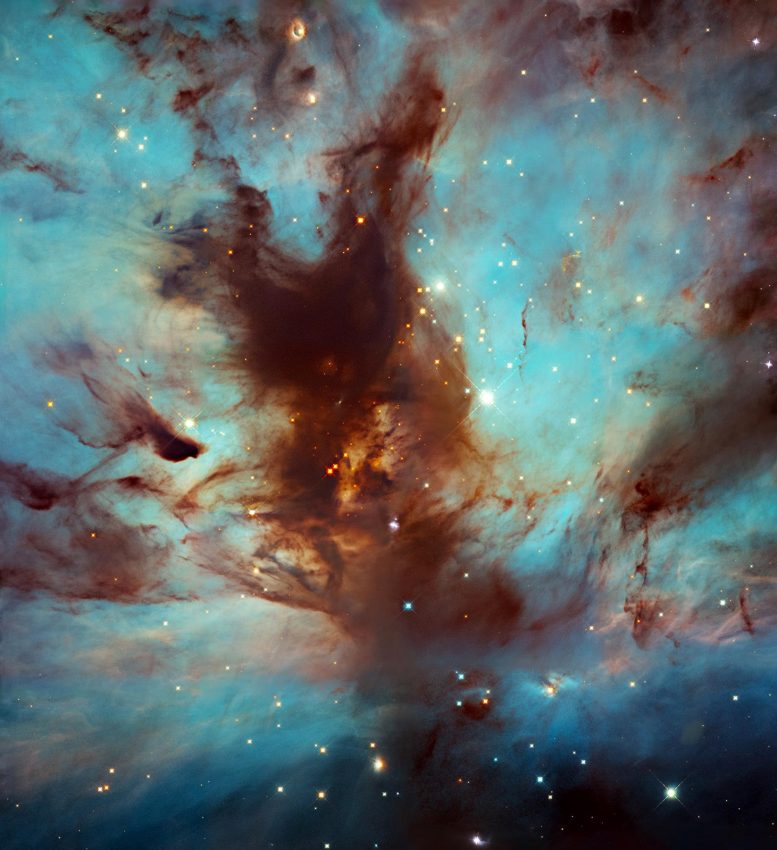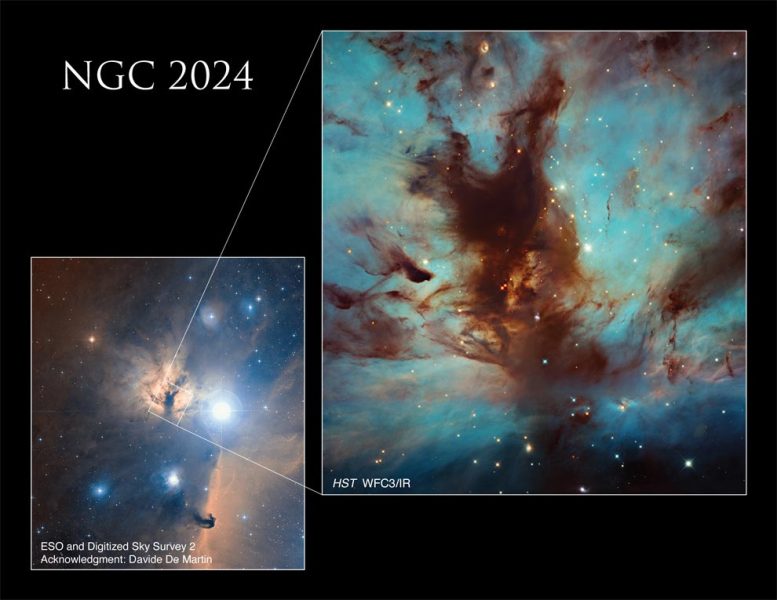
The Flame Nebula, also known as NGC 2024, is a large star-forming region in the constellation Orion that is located approximately 1,400 light-years from Earth. It’s a portion of the Orion Molecular Cloud Complex, which also includes such famous nebulae as the Horsehead Nebula and Orion Nebula.
In this image, the focus is on the dark, dusty heart of the nebula, where a star cluster resides, mostly hidden from view. Nearby (but not visible in this image) is the bright star Alnitak, the easternmost star in the Belt of Orion. Radiation from Alnitak ionizes the Flame Nebula’s hydrogen gas. As the gas begins to cool from its higher-energy state to a lower-energy state, it emits energy in the form of light, causing the visible glow behind the swirled wisps of dust.
Researchers have used Hubble to measure the mass of stars in the cluster as they search for brown dwarfs, a type of dim object that’s too hot and massive to be classified as a planet but also too small and cool to shine like a star.

The Orion molecular cloud complex (or, simply, the Orion complex) is a star-forming region with stellar ages ranging up to 12 Myr. Two enormous molecular clouds are a part of it, dubbed Orion A and Orion B. The stars currently forming within the complex are located within these two clouds.
The Orion complex is one of the most active regions of nearby stellar formation visible in the night sky and is home to both protoplanetary discs and very young stars. Much of it shines brightly in infrared wavelengths due to the heat-intensive processes involved in stellar formation. However, the complex contains dark nebulae, emission nebulae, reflection nebulae, and H II regions.
Never miss a breakthrough: Join the SciTechDaily newsletter.
1 Comment
Stunningly spectacular! The mothernature span from the ever-smaller particles on one hand to the infinite Universe on the other hand with Homo sapiens living in the between. What a fascinating mega-topic to explore that ever surprise and shock us!